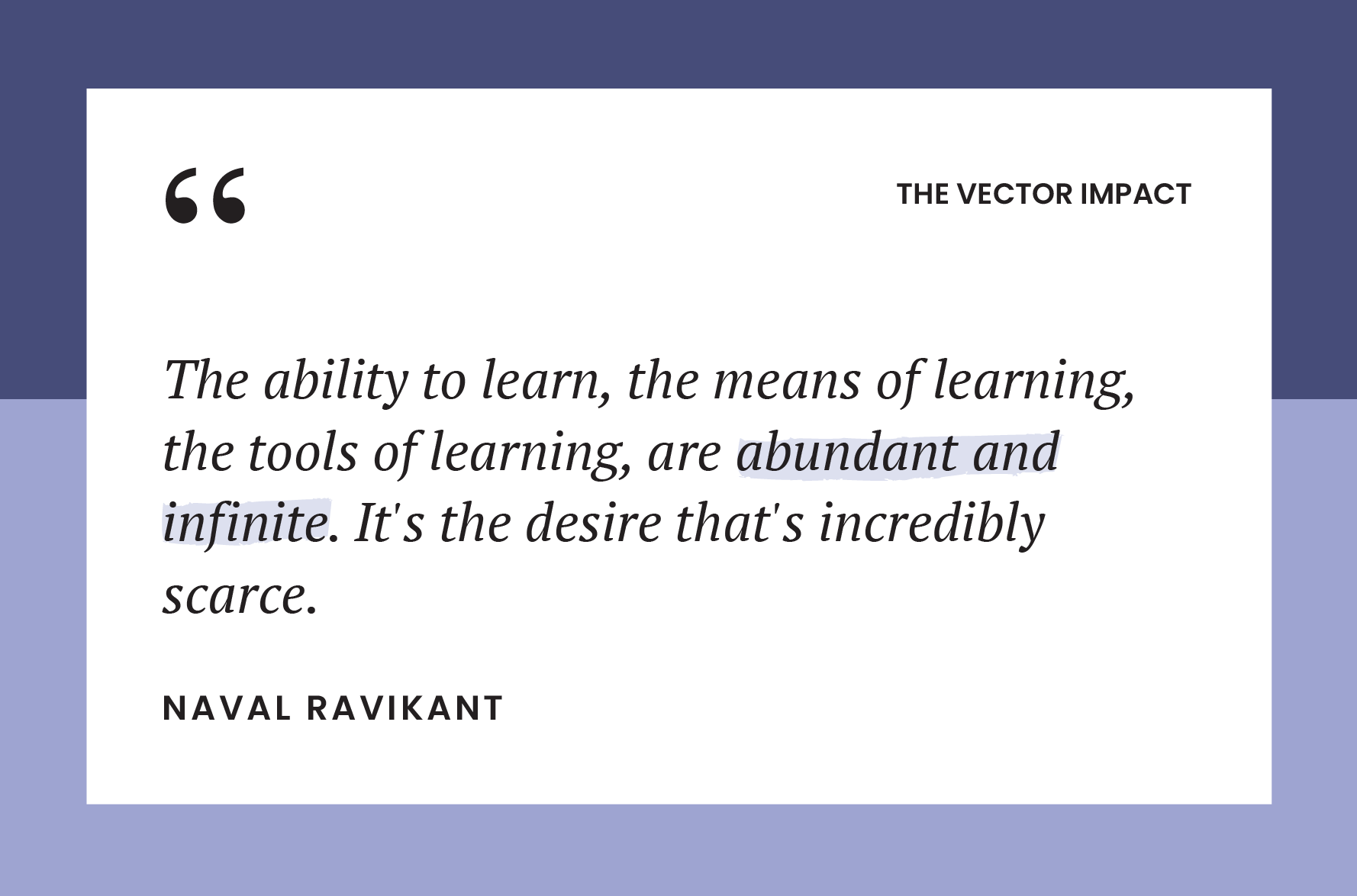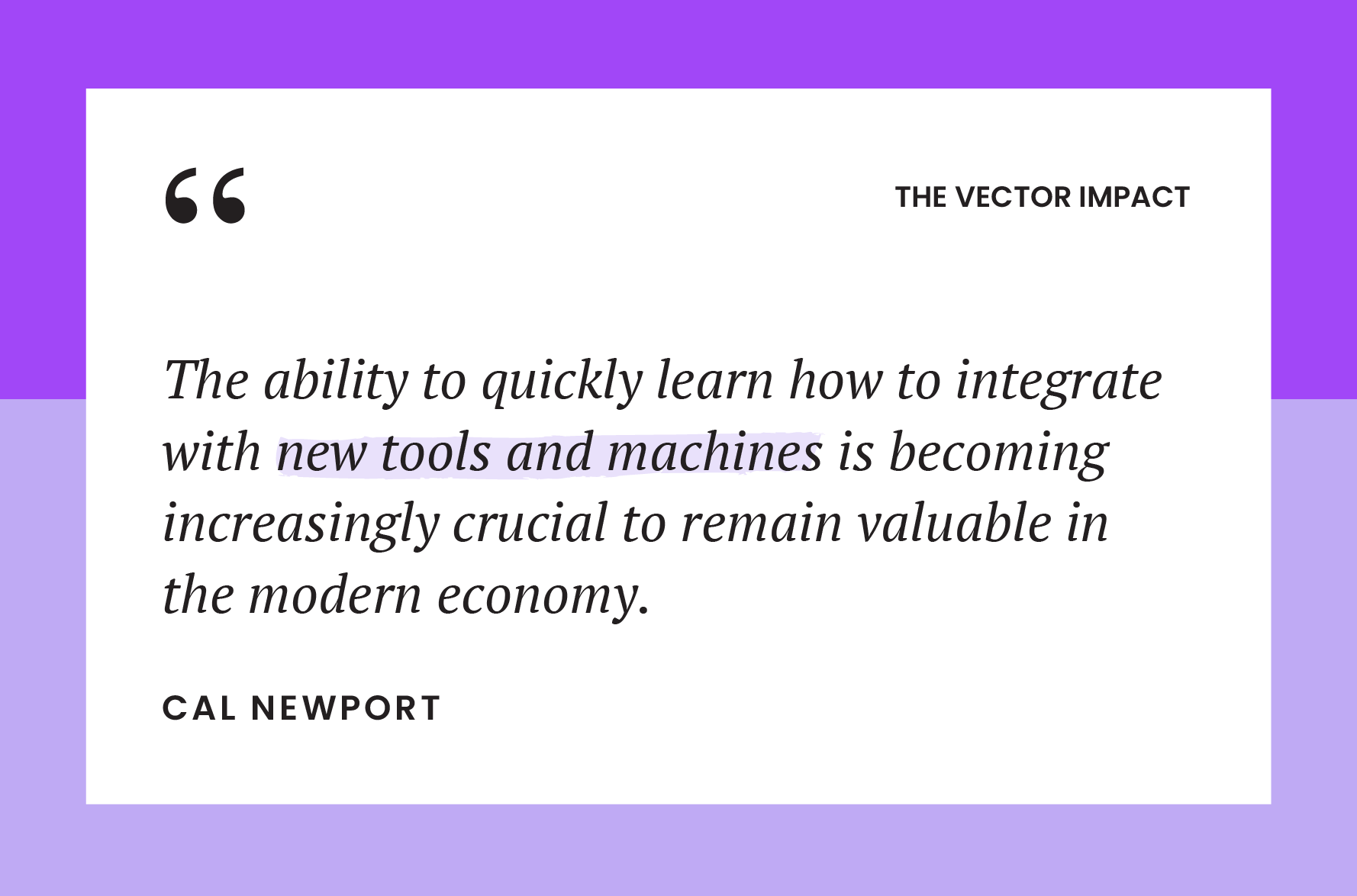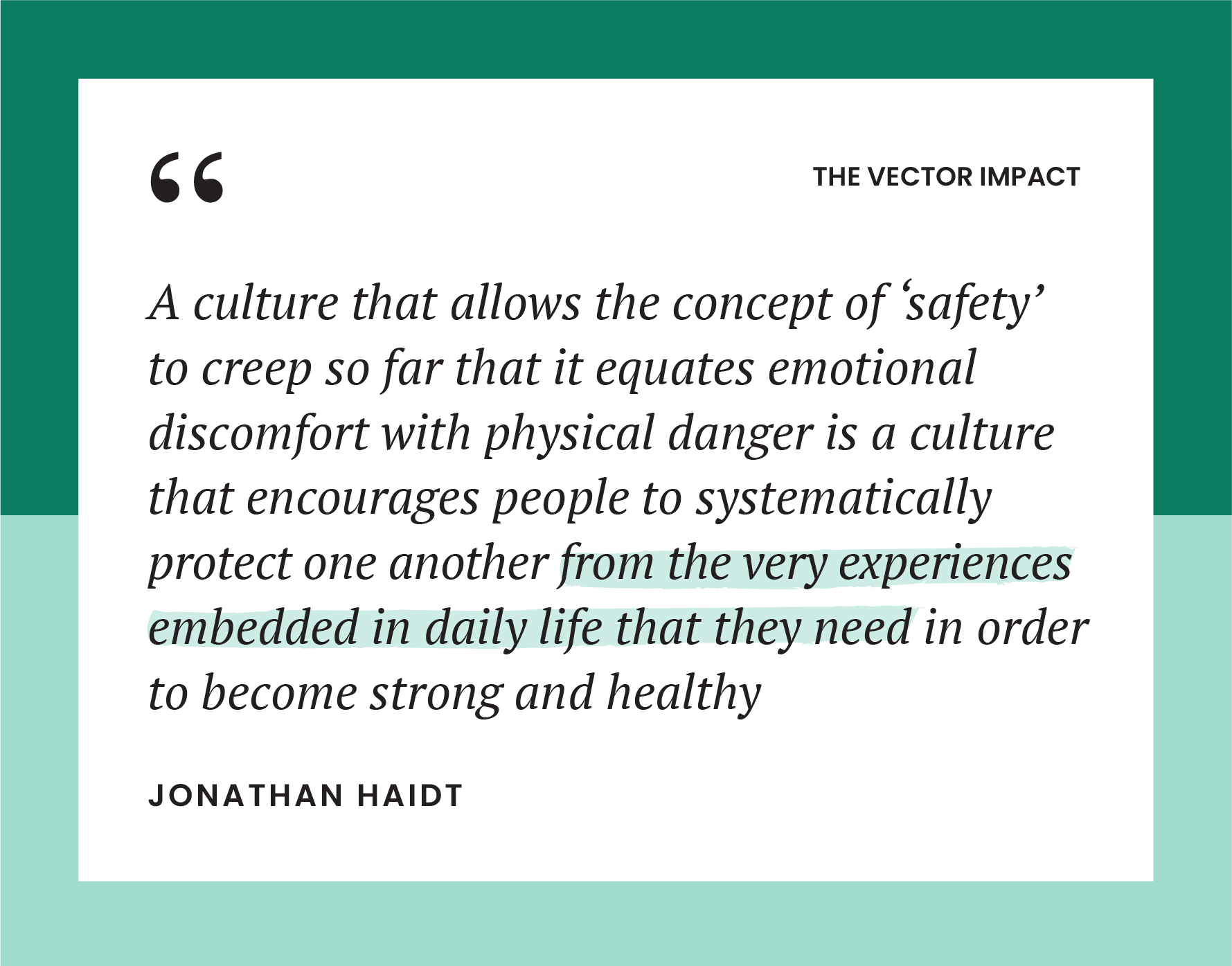
Most posts about how to build generational wealth give you general advice (*yawn*).
They have a narrow definition of the phrase itself, telling you things you already know, like “invest in retirement,” and “create a trust for your kids,” but they don’t actually teach you how to get wealthy in the first place.
As you’ll see in the first part of this post, building wealth involves none of the basic advice about investing, like:
- Real estate
- Stocks and bonds
- High-yield savings accounts
Nope—nada.
There’s a far more important investment you should make first.
Then there’s a second.
And those two will be enough to carry you to wealth. No dishing out “seven streams of income” advice. Promise.
Instead, you’ll learn how to build generational wealth in the times we live in now.
Invest in the “S&ME 500”
The following are real examples of investments I’ve made that have had truly outsized returns.
- One investment provided a 2,350x return or 235,000 percent.
- Another investment provided a 133x return or 13,300 percent.
- Yet another yielded a minimum 10x return per 1,000 percent.
So, did I buy some meme crypto coin to make gains like these?
No. I invested in myself.
I spent money in exchange for educational assets that taught me skills I could use to make more money.
The first investment was a $200 course on blogging that I used to learn a skill that would make me $470,000 writing on Medium. And that doesn’t even count the six figures of revenue I’ve made freelance writing.
The second investment was a $750 course on how to write and publish a book. I used that skill to make more than $100,000 in royalties. Not only that, but the books themselves led to other income streams and back-end sales from people who read those books and wanted to do further business with me.
I’ve spent at least $50,000 on coaches who helped me in multiple areas like sales, marketing, and productivity. I can tie a million dollars in revenue directly to those coaches, and I can attribute the millions I will make in the future back to them as well.
I’ve bought and read hundreds of books on many different subjects that helped me build what Charlie Munger called a “latticework of mental models.” I use these to solve problems in my personal and professional life, both of which bleed into each other and have a symbiotic relationship.
If you want to learn how to build generational wealth, you have to become the first generation that gets wealthy.
To do that, you must invest in yourself.
You must invest time, energy, money—or, preferably all three—into acquiring profitable skills that leverage your natural talents and strengths so you can find an edge in a competitive market.
If you can hit this trifecta, you can build wealth.
And all the tools to do so are available to you, btw, even if you don’t have a single dollar to your name.
The only vehicle for infinite leverage
A mantra I’ve had for years: Outside of being a professional athlete, an A-list actor, or a famous pop star, you can learn how to do almost anything and accomplish almost any result if you have the resolve and desire to do so.
And the tools to help you are abundant and infinite.
You don’t have to start with buying books, courses, or coaches. You can do it for zero dollars as long as you have a phone or computer and an internet connection. All of this can happen fast, too.
Enter the “nightmare protocol.”
I learned this concept from nine-figure entrepreneur Alex Becker. It’s a two-week, mentally grueling, rapid-learning protocol you can use to learn a profitable skill fast. Following a protocol like this instantly puts you in the top 10% of your field because most people don’t try.
How the nightmare protocol works:
- You can’t leave your house unless it’s to exercise
- You can’t watch TV, check social media, or use any form of entertainment or distraction at all
- You are not even allowed to have a social life
For two weeks straight, you are only allowed to learn and master a profitable skill by spending every waking hour attempting to do so.
This begs the question: How do you do it?
Here’s the answer you don’t want to hear: You’ve got to figure it out.
I will give you a sample protocol, but there’s an important lesson here if you want to learn how to build generational wealth: You have to eliminate learned helplessness, learn how to figure things out on your own, and be more adaptable.
Basically, you must unlearn everything about learning you’ve learned up to this point.
Most people struggle to gain skills that create wealth because the formal education system teaches them all the wrong lessons. In school, there’s always a “right” or “wrong” answer.
In the real world, there are only probabilities, educated guesses, and calculated risks.
In school, you know exactly what to do to pass. There’s a specific rubric that creates a deterministic, if/then logic you can follow to get the result. It’s a closed environment—a bounded game.
Real life is an infinite game with infinite possible realities, based on the combination of every single decision and micro-decision you make.
There’s no rubric.
There are powers at play, like chance and even dumb luck you have to contend with.
In fields that lead to wealth, like business (and unlike school), you mostly fail and you are mostly wrong.
But you only have to be right once to get rich.
With that in mind, let’s take a look at what this might look like…
Building your nightmare protocol
If you have no idea where to start, you can use one of the most powerful learning tools available to you. One that is changing the landscape of learning, fundamentally altering the economy, re-molding the workplace, and even raising deep ethical and moral questions about whether or not it should exist at all.
I’m sure you’ve guessed by now—it’s AI.
I wrote an article about the ideas shared by Cal Newport, an expert in skill acquisition and the future of work. And I’ve talked about this quote by him:
I can’t predict the future of AI, but I can say from personal experience that it has been a life-changing tool that helps me learn faster and augment my skills in ways that give me massive leverage.
You can use it to discover your winning strategy for wealth-building. I found an anonymous account on X that shares detailed prompts you can use for skill acquisition. Try this one:
- Write down every business idea you have in your notes app…
- Then send them to AI, alongside this prompt:
You are an elite business & innovation analyst with expertise in pattern recognition, market analysis, and idea optimization. Analyze the following list of ideas using this structured approach: HERE ARE MY IDEAS: Format your response with clear sections, actionable insights, and specific recommendations. Be brutally honest about flaws and opportunities.
For each idea, evaluate:
– Market potential (1-10)
– Execution complexity (1-10)
– Resource requirements (Low/Medium/High)
– Time to market
– Potential revenue streams
– Key risks
– Competitive advantage
– Identify common themes
– Find non-obvious connections
– Highlight potential synergies
– Suggest possible combinations
For each idea:
– Ways to reduce complexity
– Methods to increase profitability
– Potential pivot options
– Scale opportunities
– Risk mitigation strategies
Rank ideas based on:
– Profit potential
– Speed to market
– Resource efficiency
– Competitive moat
– Growth potential
– Current market conditions
Provide:
– Specific improvements
– Additional features
– Market positioning
– Differentiation strategies
– Growth hacks
Show how ideas could:
– Be combined
– Support each other
– Share resources
– Create larger opportunities
For top 3 ideas:
– Critical first steps
– Key milestones
– Resource requirements
– Timeline estimates
– Success metrics
[Your ideas go here]
Credit: @apollonator3000 on X
After you have a detailed roadmap and analysis for the business idea that makes the most sense based on the prompt, you can tackle each step provided to you by the prompt.
You can even ask the AI tool to give you the two-week nightmare protocol step by step.
The best way to get better at AI is by using it. Your mind will take you down rabbit holes based on AI’s responses. You will develop a symbiotic relationship where the AI tool is prompting you as much as you are prompting it.
You’ll get specific insights for resources to learn the profitable skill, and you can use the “YouTube until you’re out of questions” framework for selecting a skill to make money.
Here’s how it works: Let’s say your AI analysis points you toward creating a Facebook Ads agency for e-commerce businesses. It suggests YouTube to learn how to do it.
You’d type in the YouTube search bar “how to start a Facebook Ads agency for e-commerce businesses” and watch the most (seemingly) useful and highly rated video on the subject. Then, as you watch the video, note every single tiny question that pops into your mind. Write down anything confusing, where you need more clarity, and anything that isn’t fully explained in the video.
After that…repeat the process.
Type each question into YouTube search, watch a new video, and note questions. Continue this process until you’ve exhausted all of your questions.
I know what you’re thinking…
“This sounds like a lot of work.”
It IS a lot of work.
The reason why most people never get rich is, frankly, because the work required is painful, uncomfortable, and absurd compared to the average effort most people put into most things.
Most people aren’t rich.
So, if you want to get rich, you can’t be like most people.
Not many are willing to go through what it takes. You must be willing. There is no motivational talk in the world that will force your hand. It’s on you.
I went to great lengths to talk about what it takes to become skilled enough to get rich because I want you to know what you’re getting into.
Reading a blog post about investing in some index funds or adopting the “millionaire next door” mindset with surface-level information won’t get you there.
THIS level of thinking and diligence will.
How to build wealth with a business concentration
The common wisdom about building wealth is dead wrong.
If you listen to the “experts,” you’ll hear them talk about diversification, multiple income streams, and spreading your resources across various assets:
“Don’t put all your eggs in one basket.”
“You need seven streams of income to be wealthy.”
“The millionaire next door invests broadly.”
All nonsense.
The NUMBER ONE vehicle to build significant wealth isn’t diversification—it’s an extreme, almost irrational concentration in a single business for an extended period.
I know this contradicts everything you’ve been taught, but hear me out.
Consider what happens when an entrepreneur has the opportunity to pull out money after the business starts to do a couple million in revenue, or even tens of hundreds of millions in revenue.
The conventional wisdom says they should take at least half and “diversify”—put it in index funds, buy a rental property, maybe even some bonds for “safety.”
But the entrepreneurs who create massive wealth ignore this advice entirely. They put 100% of those profits back into scaling their business.
That money can be used to hire A+ talent that gives the company more leverage.
It can be put into R&D to make the product better.
You can hire a consultant to become even more skilled. (Alex Hormozi says to continue doing this until you are so rich that you no longer need to. He has yet to stop doing this himself, even though he has a 9-figure net worth.)
Look no further than the richest man on the planet as an extreme example.
After PayPal sold to eBay, Elon Musk bagged $180 million. Did he diversify? Buy real estate? Index funds? Nope.
He dumped $100 million into SpaceX, $70 million into Tesla, and $10 million into SolarCity.
Today? Those concentrated bets turned into companies worth hundreds of billions. He went from having wealth that would last several generations to a level of wealth that can secure the future of his bloodline indefinitely.
While everyone else was spreading their money thin chasing “safe” 8% returns, Musk was going all-in on his vision, his expertise, and the businesses he could directly control.
That’s how you build wealth that changes the world. Not by playing it safe, but by betting big on yourself.
The path to significant wealth isn’t through passive investing—it’s through ownership and control of an asset that you can influence directly, whose value you can multiply through your knowledge, expertise, and execution.
That asset is your business.
The “diversification first” mindset is born from a fundamental misunderstanding of how real wealth is created. It stems from a middle-class mentality that prizes safety over upside, security over opportunity, and small, predictable gains over transformational growth.
In contrast, here’s how the ultra-wealthy actually build their fortunes:
2. They focus maniacally on growing that single entity, often for a decade or more 3. They reinvest profits back into that business, doubling down on what’s working 4. They ignore conventional diversification advice until they’ve built a cash-flowing machine 5. Only then do they begin to diversify—and even then, often by acquiring complementary businesses rather than passive investments
Look at the Forbes 400. Nearly every fortune began with a single business that was scaled aggressively. Bezos didn’t start Amazon and then immediately diversify into real estate and bond funds. He poured every cent back into Amazon for years, even decades—extreme concentration, not diversification.
But this approach requires something most people lack: the mental resiliency to deal with the anxiety of concentration. When you’re all-in on a single entity, you feel every fluctuation. Every setback hits harder. Every threat seems existential. Most people can’t handle this emotional roller coaster, so they retreat to the comfort of diversification.
And that’s precisely why the rewards are so massive for those who can endure it.
The mathematics of concentration vs. diversification
I’m a huge fan of using math instead of intuition.
It’s much more difficult to build generational wealth through passive investing than through a real business.
Assume you have $100,000 to invest with the diversification approach, you might put:
- $40,000 in index funds (historical return: 8%)
- $40,000 in real estate (historical return: 10% including appreciation)
- $20,000 in bonds (historical return: 4%)
Your blended return: approximately 8%.
After 10 years, your $100,000 becomes about $215,000. Not bad, but not transformational.
Now consider the concentration approach. You invest all $100,000 into your business. The average small business might grow at 15-20% annually, but a well-executed business with reinvestment can easily see 50-100% annual returns on capital.
At 50% annual growth, your $100,000 becomes $5.8 million in 10 years. At 75% annual growth, it becomes $40.7 million. At 100% annual growth, it reaches $102.4 million.
“But that’s not realistic,” you might say.
Tell that to the founders of companies that grew from nothing to billions in a decade.
The truth is that businesses you control and scale aggressively can achieve these growth rates, especially when you’re reinvesting profits rather than extracting them.
Remember earlier I told you about that book publishing course I bought for $750? Well, the same course now costs $8,000. It’s the best online course I have ever taken in my life, which makes sense, because the founder, Chandler Bolt, is one hell of an entrepreneur.
I bought the course almost a decade ago. While I’ve made a couple million dollars, Chandler went on to build a company with an 8-figure run rate. He didn’t keep starting new businesses. He just made the course better and better and better.
To get traffic to his product, he made a brilliant move of buying other writing blogs so he could take all their existing SEO traffic and send it his way (I know for a fact he offered a colleague of mine a million dollars for his site).
He reinvested the cash into more marketing channels like YouTube, ads, and live events. He built one product, sold it to one avatar, kept making the product better, and poured back all of the money into the business. He built a company. One that isn’t reliant on him being the face of it, which means that if he ever does decide to sell it, it’ll be worth 9 figures.
I don’t have many regrets, but I do wish I would’ve been more focused like this when it comes to product, marketing, and distribution. I have, in the past 12 months, built a product that I finally feel has the sort of product market fit to hit numbers like these. I’m going to follow in Chandler’s footsteps so I can build a business with exit potential. Better late than never.
When diversification becomes dilution
For entrepreneurs building wealth, premature diversification is wealth dilution.
Every dollar you extract from your growing business to invest elsewhere is a dollar that isn’t compounding at your business’s superior growth rate. It’s a dollar that isn’t funding the next product line, the key hire, or the marketing campaign that could 10x your revenue.
This doesn’t mean diversification is never appropriate. It means there’s a specific time for it, and that time is after one of these milestones:
2. You’ve built enough personal cashflow that you can comfortably fund both aggressive business growth and outside investments 3. You’ve reached a level of wealth where capital preservation becomes more important than growth
Until then, diversification is just a comforting distraction that slows your path to significant wealth.
I’ve seen too many entrepreneurs cripple their growth potential by trying to “play it safe” too early. They hit their first $300,000 in revenue and immediately start planning how to extract capital for “safer” investments. Meanwhile, their competitors who reinvest everything are scaling to $3 million, then $30 million.
Most people who advocate early diversification are thinking too small. They’re optimizing for comfortable affluence rather than significant wealth. And that’s fine if that’s your goal.
But if you want to build true generational wealth—the kind that fundamentally changes your family’s trajectory for decades or centuries—then concentration, not diversification, is the path.
So ignore the conventional wisdom. Go all-in on your business. Reinvest aggressively. Scale relentlessly. And only when you’ve built something truly valuable should you think about spreading your resources elsewhere.
Diversification can wait. Your empire cannot.
Transfer wealth without transferring weakness
Now that you have the playbook to get wealthy, let’s finally talk about how to keep and transfer that wealth.
Transferring wealth is difficult because, let’s face it, rich kids tend to be spoiled and entitled because growing up rich tends to do that to you.
Money without mentality destroys more family legacies than any market crash ever could.
The Japanese have a proverb for this: “The third generation sells the teahouse.” The first generation builds, the second maintains, and the third squanders.
When you transfer financial wealth without transferring the mental wealth that created it, you give power without the responsibility that created it. Resources without the resourcefulness that earned them. Abundance without the scarcity that taught discipline.
Most inheritance plans focus exclusively on the first while ignoring the other three. This is why they fail. If you want to learn how to build general wealth and transfer it properly, focus on the real pillars of generational wealth that extend beyond money.
1. Work ethic cultivation
Children don’t learn work ethic from lectures—they learn it from observation and experience.
Here’s my approach:
First, make your work visible. Let your children see you at your desk at 5 a.m. Let them see you solving problems when others would quit. Let them watch you prioritize productive work over consumption.
This isn’t about martyrdom or workaholism—it’s about showing them that consistent, purposeful effort is the foundation of achievement.
Second, create opportunities for them to experience the direct connection between effort and reward from an early age. If your child wants a particular gaming system, rather than buying it for them, help them find a way to earn the money themselves.
Third, never shield them from hard work. When there’s a home repair needed, tackle it together rather than just calling a service. When the yard needs maintenance, do it as a family. These aren’t punishments—they’re investments in their future ability to persevere when things get difficult.
2. Skill development advocacy
The modern economy rewards specialized skills far more than generalized knowledge. The ability to do something valuable that others cannot do is the ultimate economic moat.
Don’t just encourage your children to develop skills—invest heavily in their skill acquisition, but with a crucial difference from most parents: Focus on the meta-skill of learning how to learn.
Help them understand concepts like deliberate practice. Notice the things your child gravitates to naturally and then push them into mastering them. Don’t push them in directions they don’t want to go, but when you find that “thing,” pour all of your energy into helping them become the best.
Perhaps most importantly, model this behavior yourself. Let your children see you deliberately acquiring new skills even as an adult. Watch you struggle through the uncomfortable early stages of learning. Observe you hiring coaches and mentors. The message must be clear: Skill development isn’t just for children—it’s a lifelong commitment.
3. Resilience engineering
Resilience may be the most critical trait for maintaining wealth across generations. Without it, the first major setback becomes permanent.
When your kid faces a challenge or setback in school, sports, or a project they are working on, don’t just try to make them feel better. Show them how to get better.
Do a “post-mortem.” What went wrong? What could they have done differently? How could they apply these lessons to their next attempt? Give them the tools to learn how to overcome obstacles on their own. Don’t rob them of that gift by letting them off the hook.
Also, expose them to the reality of your own business failures. Let them see you experience the pain of failure but also witness the methodical extraction of lessons and immediate pivot to the next opportunity.
This is the opposite of how most wealthy parents raise their children. Most shield their kids from any discomfort or consequence, creating psychologically fragile adults who crumble at the first sign of adversity.
Dr. Jonathan Haidt even talks about this in his book, The Coddling of the American Mind:
This well-intentioned protection becomes a devastating weakness when they eventually inherit wealth they haven’t learned to manage through difficult times.
4. Mental model transmission
The quality of your decisions determines the quality of your life. And the quality of your decisions depends on the mental models you use to interpret reality and solve problems.
Expose your children to powerful mental models from different disciplines so they learn how to think and adapt in the real world.
When your child wants to make a decision, walk them through the frameworks and mental models for those decisions.
For example, when your teenager is considering whether they want to go to university, get right into the workforce, or start a business, walk them through the decision using multiple frameworks: expected value calculations, regret minimization, and inversion (asking what would make each choice a disaster). They’ll not only make a better decision but will also internalize these thought patterns for future use.
Passing on thinking tools gives them an operating system for wealth creation and preservation that most inheritors never receive.
The nuts and bolts of wealth transfer
Now let’s address the actual mechanics of wealth transfer.
My advice? Structure your inheritance to provide security without creating dependency, and opportunity without enabling entitlement.
Every human performs better when their basic needs are secure. Consider establishing trusts that will provide your children with: This base layer removes extreme downside risk without creating luxury. It gives them the security to take calculated risks in their own wealth-building journey. Consider conditional growth capital Rather than giving them a lifestyle, create structures that provide capital for productive purposes: The key is that none of this capital can be used for consumption—only for investment in business, others, or themselves. Design incentive structures Tie some wealth components directly to their productivity: Set up staged inheritance with preparation Structure the bulk of the actual inheritance to transfer in stages, with each stage preceded by intensive preparation:
Ironically, I spent the least amount of time on the step-by-step principles for passing down wealth because they are far less important than the type of wealth you should focus on passing down.
It’s not about money, but mindset—teaching your children how to think, teaching them how to learn, allowing them to fail, being a great example of how to behave as an adult, instilling an actual culture as a family, and preparing them for life instead of trying use your money to live life for them.
True wealth is more than money—it’s legacy
We live in the wealthiest time in human history.
You’re holding more knowledge in your hand right now than the Library of Alexandria ever contained. Your day-to-day comforts? Better than that of an 18th-century king.
But the real inheritance we’ve been given isn’t just electricity, plumbing, air conditioning, or motor vehicles. It’s cultural, psychological, philosophical, even spiritual.
The Golden Rule. The pursuit of truth. The belief that opportunity exists for anyone willing to do the work.
And yet, like a spoiled rich kid who doesn’t realize how good they have it, our culture has forgotten how rich we already are.
Resources alone don’t lead to happiness. In fact, when they’re handed to you without effort, they tend to do the opposite. That’s how you end up bored, doom-scrolling on a miracle device that connects you to the entire world—without appreciating any of it.
Because true wealth isn’t just financial.
It’s purpose. It’s pride in your work. It’s honor, duty, discipline, curiosity, and creativity. It’s the mental toughness and craftsmanship that built everything we benefit from today.
So no, I’m not only asking you to build generational wealth for your family. I’m asking you to rebuild the generational wealth of society—the kind that’s been slipping through our fingers. What will you pass on?









